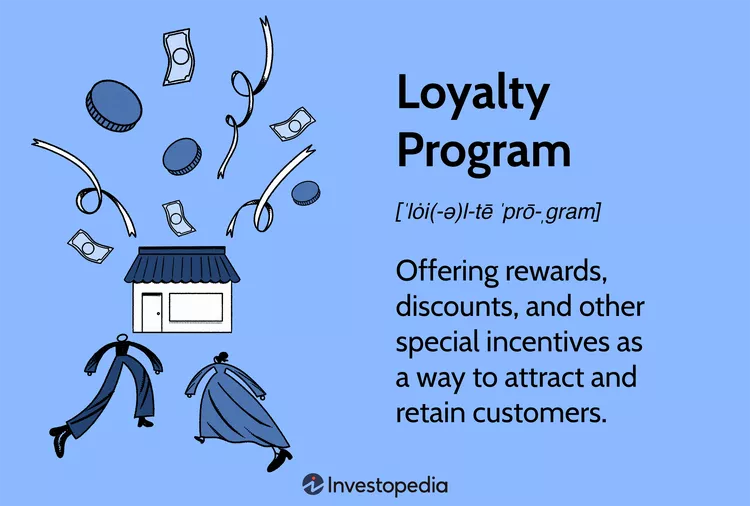The Power of Customer Loyalty Programs: How They Can Boost Your Business
In today’s competitive market, keeping customers loyal is more important than ever. Customer loyalty programs have emerged as a powerful strategy for businesses to foster repeat business, increase customer retention, and drive long-term growth. But how do these programs work, and what makes them so effective? In this article, we’ll explore how customer loyalty programs can benefit your business and help you create lasting relationships with your customers.
What is a Customer Loyalty Program?
A customer loyalty program is a marketing strategy designed to reward customers for their repeated business. These programs typically offer incentives such as discounts, points, or exclusive perks to encourage customers to continue purchasing from a specific brand or business. Loyalty programs help brands build stronger emotional connections with customers, making them more likely to return and recommend the business to others.
Types of Customer Loyalty Programs
There are several types of loyalty programs that businesses can implement, depending on their industry and customer base. Below are the most common types:
- Point-based Programs: Customers earn points for every purchase, which can later be redeemed for discounts, gifts, or services.
- Tiered Programs: These programs offer rewards based on the customer’s spending level, with each tier providing increasing benefits.
- Paid Programs: Customers pay an upfront fee to access exclusive benefits, such as free shipping or special offers.
- Cash-back Programs: Customers earn a percentage of their spending back, which can be redeemed or used on future purchases.
Benefits of Customer Loyalty Programs
Customer loyalty programs offer several key benefits for businesses looking to increase customer retention and boost their bottom line. Here are some of the main advantages:
- Increased Customer Retention: Loyalty programs incentivize customers to keep coming back. When customers feel valued through rewards, they are more likely to choose your business over competitors.
- Higher Customer Lifetime Value (CLV): By encouraging repeat purchases, customer loyalty programs contribute to a higher CLV. Customers who are part of a loyalty program tend to spend more over time than those who aren’t.
- Boosted Brand Advocacy: Satisfied customers who feel rewarded are more likely to share their positive experiences with others. This can lead to increased word-of-mouth marketing and new customer acquisition.
- Better Customer Data and Insights: Loyalty programs often require customers to sign up and provide personal details. This gives businesses valuable data that can help them personalize marketing campaigns and improve customer satisfaction.
How to Create an Effective Customer Loyalty Program
Creating an effective loyalty program involves understanding your customer base and what motivates them to keep coming back. Here are a few essential tips for building a successful program:
- Know Your Customers: Analyze your customer’s purchasing habits and preferences. This will allow you to create rewards that resonate with them and align with their needs.
- Keep It Simple: A loyalty program should be easy to understand and navigate. Customers should not feel overwhelmed by complicated rules or long processes.
- Offer Relevant Rewards: Offer rewards that have value for your customers. These rewards should be something they genuinely want or need. It could be discounts, exclusive content, or access to special events.
- Promote Your Program: Ensure that customers know about your loyalty program and how they can benefit from it. Promote it across your website, social media, and in-store. Make it easy for customers to sign up.
- Track and Optimize: Continuously track the success of your loyalty program and gather feedback from customers. Regularly optimize the program to keep it fresh and aligned with customer expectations.
Customer Loyalty Programs and Their Impact on Sales
Implementing a customer loyalty program can directly impact your sales and overall business performance. Research shows that loyal customers are more likely to purchase from your business again and spend more per transaction. For example, according to a study by Accenture, 77% of consumers are more likely to buy from a brand that offers a loyalty program.
Furthermore, loyal customers are also less price-sensitive. This means they are willing to pay a premium for your products or services because of the value they derive from being part of your program. This leads to higher profit margins and sustainable business growth.
Best Practices for Running a Customer Loyalty Program
To maximize the effectiveness of your loyalty program, consider the following best practices:
- Personalize the Experience: Use customer data to offer personalized rewards that match their preferences. Personalization creates a more engaging experience, which increases the likelihood of repeat purchases.
- Provide Exclusive Offers: Reward your most loyal customers with exclusive deals, early access to new products, or special VIP treatment. This makes customers feel special and appreciated.
- Encourage Social Sharing: Motivate customers to share their loyalty rewards and experiences on social media. This can help attract new customers and build brand awareness.
- Communicate Regularly: Stay in touch with your loyalty program members by sending them updates, offers, and reminders about their rewards status. Keep them engaged and excited about the benefits of your program.
Conclusion: Why You Should Implement a Customer Loyalty Program
Customer loyalty programs are not just a trend—they are a proven strategy for retaining customers and driving business growth. By offering valuable rewards and incentives, businesses can build stronger relationships with their customers, leading to increased sales and long-term success. If you haven’t already implemented a loyalty program, now is the time to start reaping the benefits of customer loyalty.






